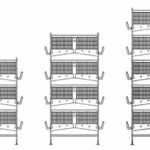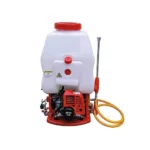The government of the Philippines in collaboration with the Food and Agriculture Organisation (FAO) has started using unmanned aerial drones to assess where farmlands are most at risk from natural disasters and quickly assess damages after they strike, NaijaAgroNetreports.
This, NaijaAgroNet also reports is in a bid to stay ahead of the negative impacts of climate change, floods and typhoons on food security, especially in the Philippines.
In addition, under a pilot phase of the still-fledgling project funded by the Ministry of Agriculture of the Philippines and the FAO, two drones have already been sent soaring over the Philippines provinces that have been affected by the current El Niño.
NaijaAgroNet equally reports that some 25 FAO and government technical experts are ready to be deployed across the archipelago to support drone missions. They were recently trained over three weeks on how to fly the drones and learned a range of remote aerial assessment methods.
The drones, NaijaAgroNet reports, are equipped with navigation and photogrammetric equipment that could generate detailed and data rich maps from aerial photographs including Normalized Difference Vegetation Index or NDVI, a formula used for assessing vegetation and plant health.
Data gathered, NaijaAgroNet gathered, could be used to see where agricultural systems are at particular risk from natural disasters and identify ways through which such risks can be countered, for example, through ground contouring, building retaining walls, or planting protective vegetation.
Capable of covering up to 600 hectares a day, the drones should significantly accelerate the process of risk analysis, according to Christopher Morales, Director of Field Operations for the Philippines Department of Agriculture.
“It is efficient, it saves time and we will be using a reliable source of data so that we can plan and provide appropriate interventions and responses for our farmers in times of disasters and calamities,” he said.
“Additionally, imagery generated from drone flights can reveal where agricultural infrastructure projects and service facilities like irrigation or storage facilities could be sited to best serve local farmers. The technology can also potentially support in the assessment of coastal and forest areas.” said Jose Luiz Fernandez, FAO Representative in the Philippines.
… Linking agrobiz, sustainable environs, people & technology













